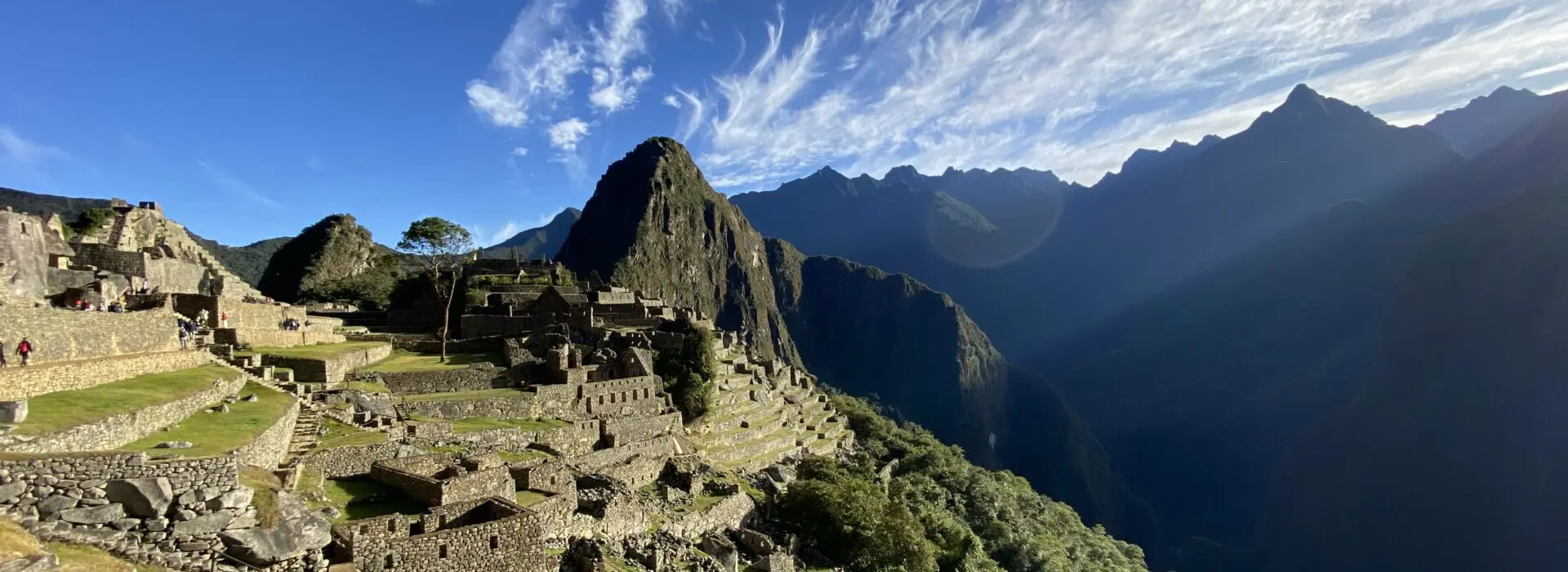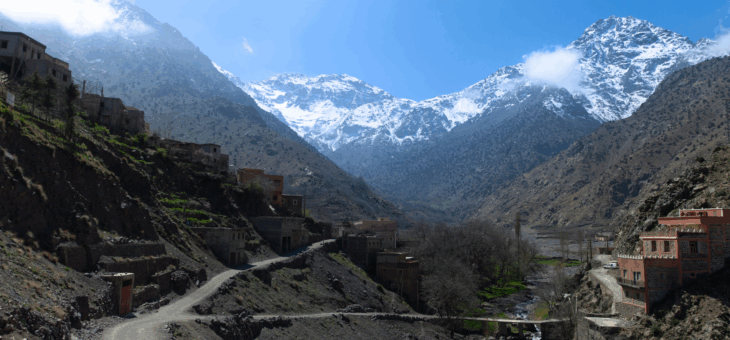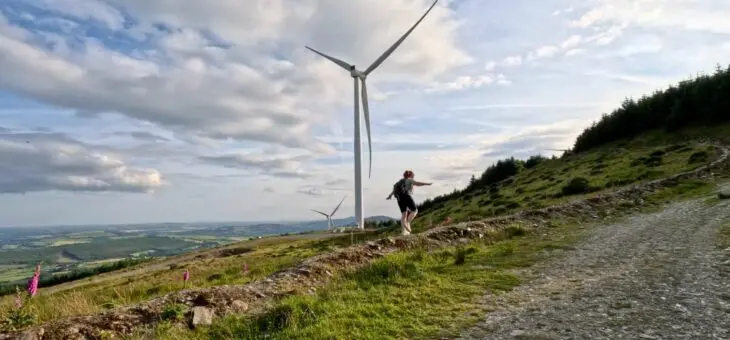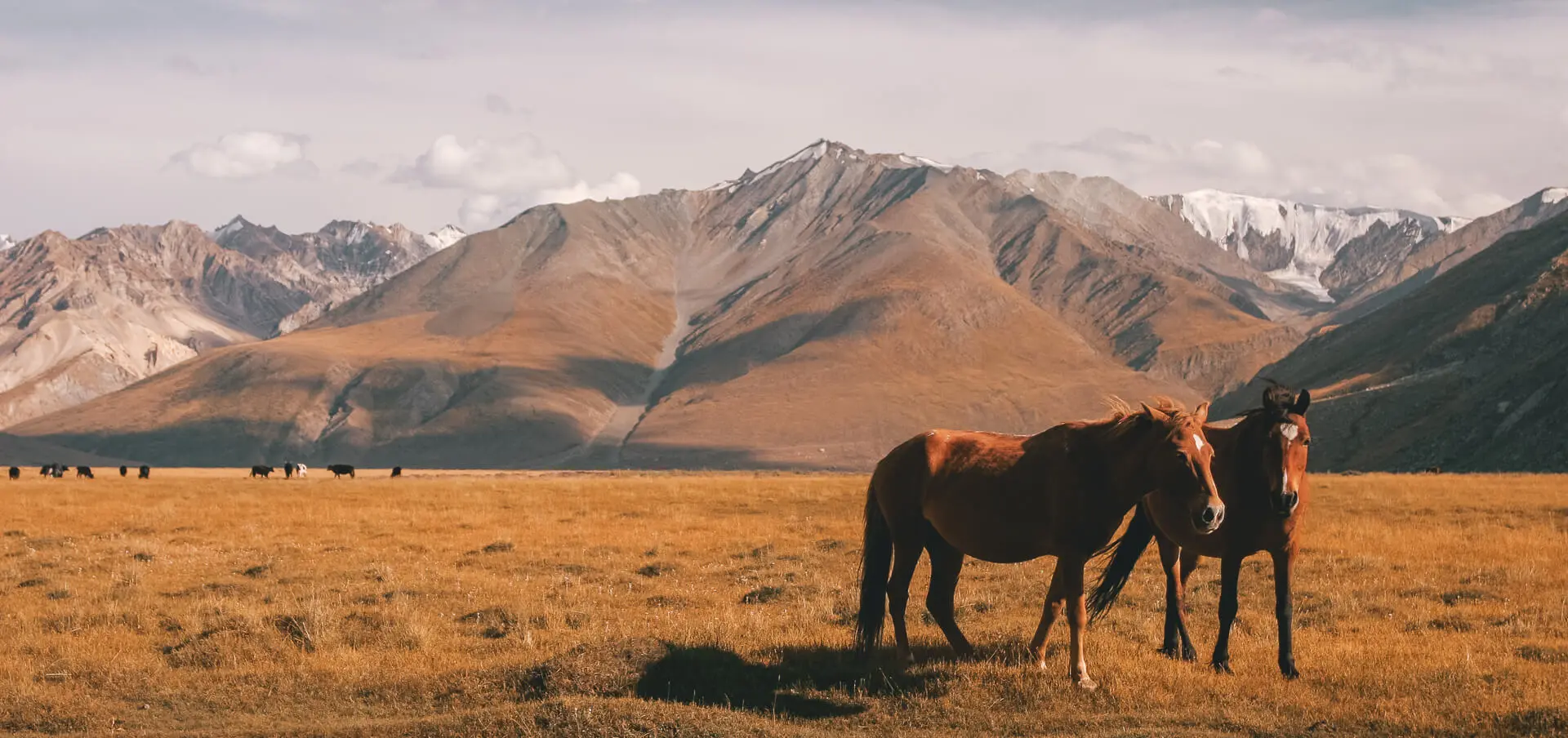Want to get to the top of Machu Picchu? There are a few different ways to do it, whether you’re climbing one of the dramatic peaks overlooking the site (Machu Picchu Mountain or Huayna Picchu), or trekking in via a multi-day hike like our epic route through Choquequirao. In this guide, we explain your options and show you why we think taking the long way to Machu Picchu is the most rewarding.
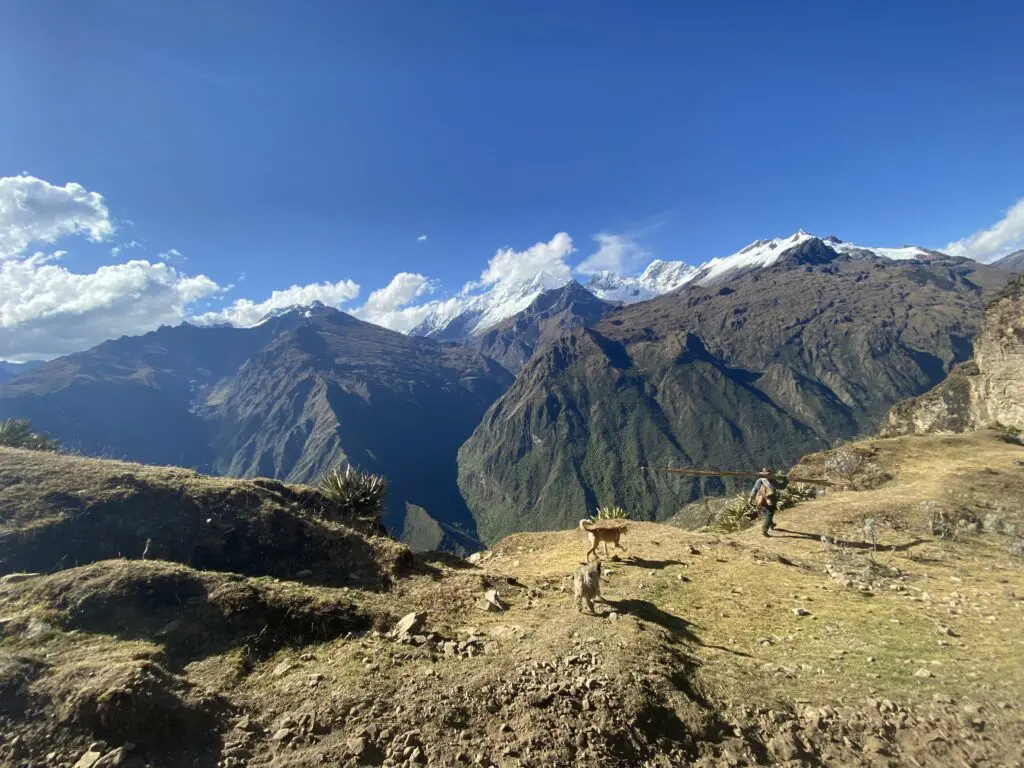
How do you get to the top of Machu Picchu?
If you’ve longed to see the ancient Incan citadel of Machu Picchu for yourself, you’re definitely not alone! But what many people don’t realise is that “the top of Machu Picchu” can mean different things.
Are you talking about reaching the Machu Picchu archaeological site? Or climbing one of the two towering peaks that rise above it – Huayna Picchu or Machu Picchu Mountain?
At Earth’s Edge, we offer a truly unique route to this legendary site, combining the remote beauty of Choquequirao with a summit experience that few get to have. Here’s everything you need to know.
How high is Machu Picchu?
Although the highest point you’ll reach on most expeditions is the ‘summit’, Machu Picchu is a little different. The altitude of this sacred site is 2,430m. Funnily enough though, the city of Cusco where we start our journey is 3,400m above sea level! This means that, while the altitude undulates throughout the trek, you’re actually largely decreasing rather than gaining height.
In fact, the highest points you’ll reach on the Earth’s Edge expedition to Machu Picchu are when we trek over the two high passes of Victoria Pass (4,150m) and Yanama Pass (4,668m) on days 7 and 8 of our itinerary.

Let’s Break It Down: The 3 “Tops” of Machu Picchu
1. Machu Picchu (the site itself) – 2,430m:
The iconic Inca ruins are set on a ridge at 2,430m above sea level. This is the classic image you see in every travel magazine; Inca stonework, terraced hillsides, and that iconic view. Most visitors either trek in or take the train and bus from Cusco. This is where the guided tours of the citadel take place, and the majority of visitors stop here. It’s stunning, but you can go higher.
2. Huayna Picchu – 2,720m:
That sharp, dramatic, photogenic peak you see towering over the site in the background of most Machu Picchu photos? That’s Huayna Picchu. It’s a short (about 2km) but steep climb with narrow steps and big exposure to the top (2,720m). Only a very limited number of permits are issued daily.
3. Machu Picchu Mountain – 3,082m:
Often less crowded than Huayna Picchu, this is the highest point above the site at 3,082m. The trail is longer (just over 3km) but more gradual than Huayna Picchu. From the summit, you get panoramic views of the entire citadel including Huayna Picchu, the Urubamba River valley, and the surrounding Andes. This is what many people mean when they say they want to get to “the top of Machu Picchu.” It’s quieter and better suited to those who prefer a steadier hike, and it’s where you’ll go if you choose to travel to Machu Picchu with us.
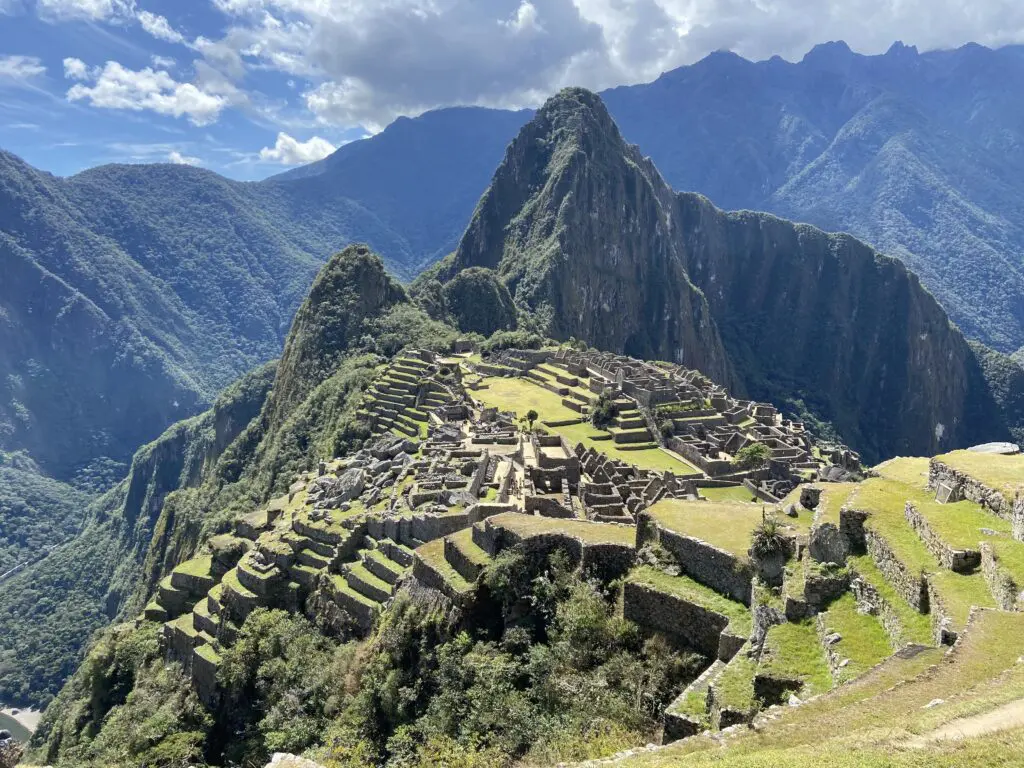
How Do You Get There? Trekking to Machu Picchu via Choquequirao
Most travellers reach Machu Picchu by hiking the Classic Inca Trail (4 or 5 days), or taking a train and bus combo from Cusco. But if you’re looking for something more adventurous and less crowded, at Earth’s Edge we do it a little differently! After all, Peru is a long old trip from Dublin. We believe that if you’re going to travel that far, you need to get more out of it!
Our 16-day Machu Picchu itinerary includes 9 days of trekking. You get to see the Peruvian Andes in all their glory, as well as a few bonus spots off the beaten track. We reckon it’s the best possible way to get to Machu Picchu.
It’s a challenging trek, but the rewards are huge: ancient ruins, diverse landscapes, and the satisfaction of reaching Machu Picchu on foot.
Read more about how hard it is to trek Machu Picchu in our blog post.
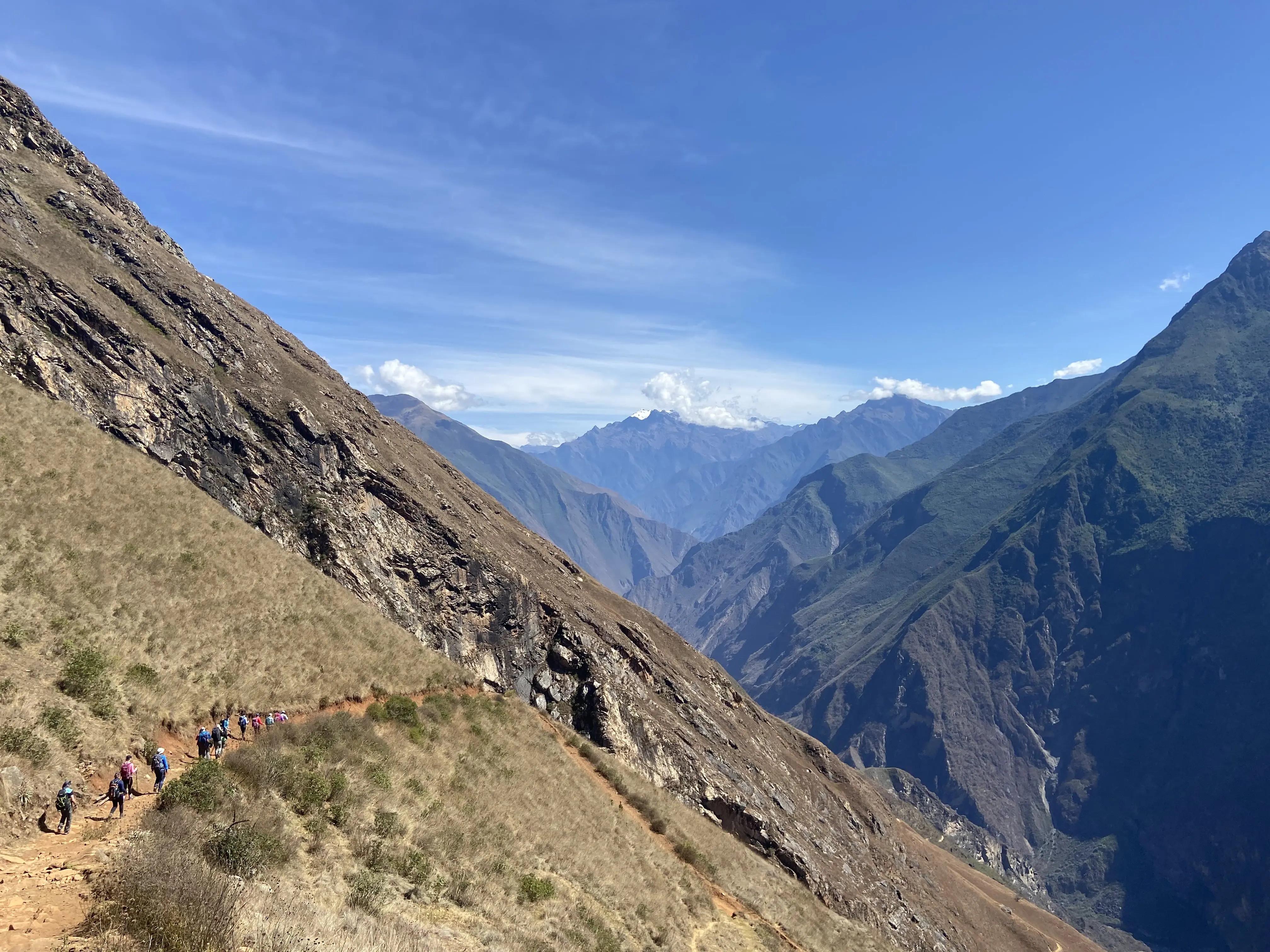
Trekking via Choquequirao
We start with an epic multi-day trek, taking in the remote and awe-inspiring ruins of Choquequirao. Often called the ‘sister city’ of Machu Picchu, this a vast Incan city is still being uncovered by archaeologists. It’s bigger than Machu Picchu, and you may not see another tourist for days, giving you a truly off-the-beaten-path experience.
After exploring Choquequirao, we continue our hike through spectacular valleys and cloud forests, gradually making our way to Aguas Calientes over several days. This is the gateway town to Machu Picchu. From there, it’s your choice: visit the citadel, climb Huayna Picchu, or summit Machu Picchu Mountain for the ultimate viewpoint. As standard, we include a guided tour of the Machu Picchu site and the option to climb Machu Picchu mountain on our expedition.

How to Book a Machu Picchu or Huayna Picchu Mountain Climb
To enter the Machu Picchu site, and to climb either mountain, you need to book a separate permit in advance. Permits are limited and often sell out, so it’s best to decide early which mountain you want to climb.
But don’t worry – We handle all permits and logistics as part of our expedition package!
FAQ: Climbing to the Top of Machu Picchu
Can you hike Machu Picchu without a guide?
You can visit the citadel with a pre-booked ticket, but to hike Huayna Picchu or Machu Picchu Mountain, you must have permits and follow designated trails. Trekking routes like Choquequirao require a licensed guide.
Is Machu Picchu Mountain worth it?
Absolutely. The views from the summit are jaw-dropping and less crowded than Huayna Picchu. It’s ideal for those who prefer a longer, steadier climb and want to get that iconic shot of the Machu Picchu citadel.
Is Choquequirao better than Machu Picchu?
Choquequirao is technically bigger, but less developed and harder to access. We believe combining both sites offers the ultimate Inca experience!
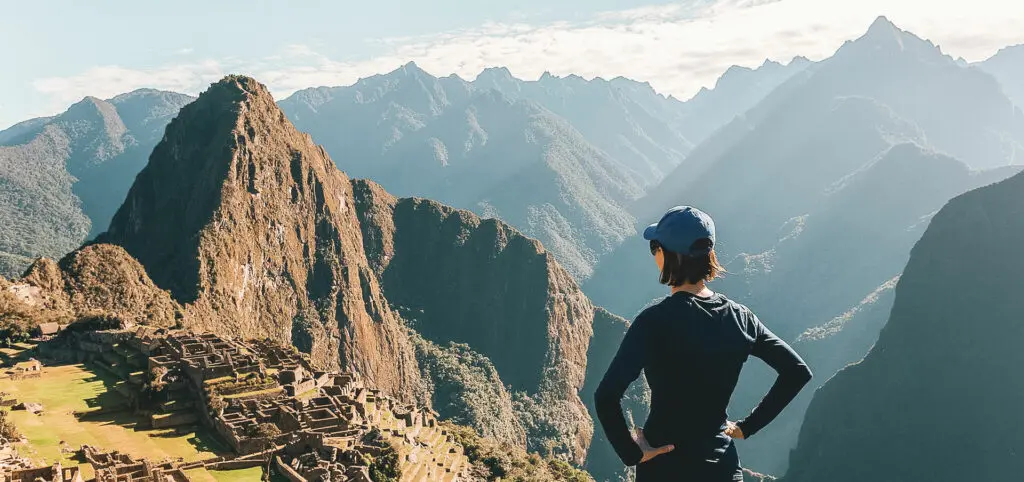
Ready to Reach the Top?
Whether your dream is to stand among ancient stones, summit Machu Picchu Mountain, or trek the quiet paths of Choquequirao, we’ve got you covered!
This is more than a holiday. It’s an experience that will stay with you for life.
Visit our Machu Picchu expedition page to see our upcoming Peru departures.
We also have the Ultimate Guide to Machu Picchu, which answers all your questions!
Prefer to chat to us in person before you book? Get in touch or book a free 1-1 consultation with one of our team today – we’re here to help!
